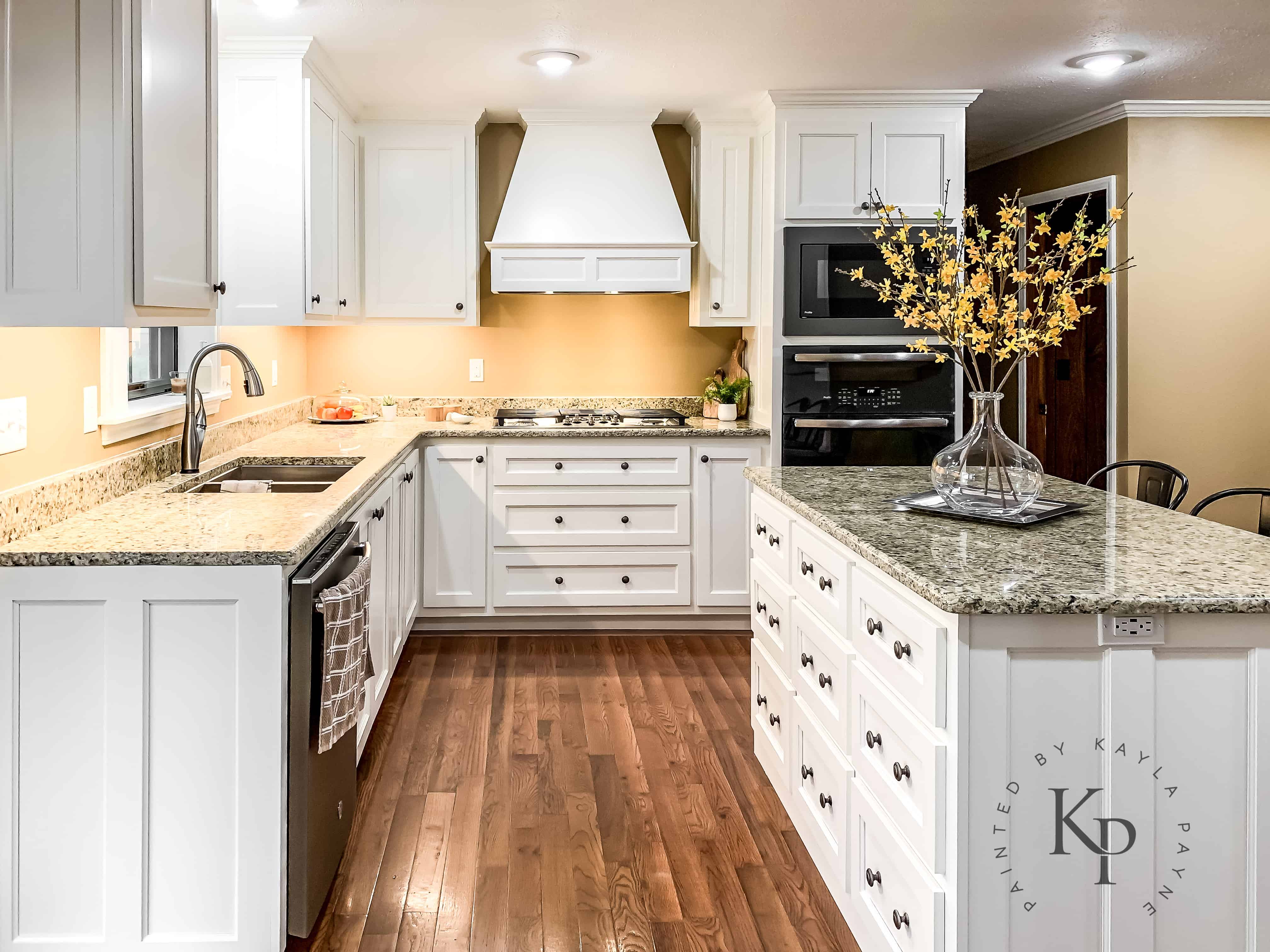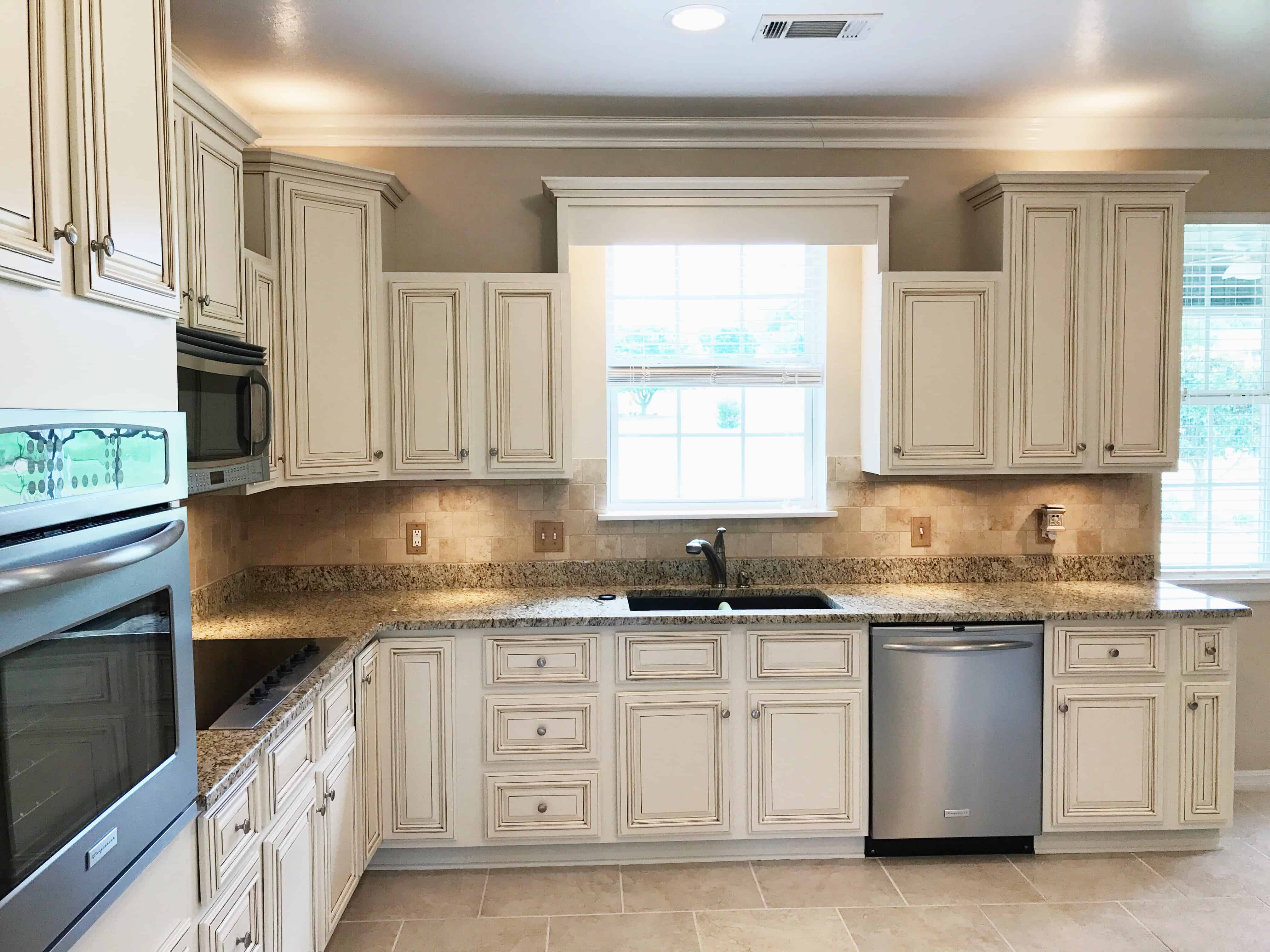The Allure of Whitewashed Kitchen Cabinets

Whitewashed kitchen cabinets offer a unique blend of rustic charm and modern sophistication, appealing to a broad spectrum of design aesthetics. Their ability to brighten a space while maintaining a sense of warmth makes them a popular choice for homeowners seeking a timeless yet updated look. Unlike stark white cabinets, which can sometimes feel sterile, or highly saturated colors that might date quickly, whitewashed cabinets provide a subtle, layered effect that enhances rather than overwhelms the overall kitchen design.
Whitewash Techniques and Their Visual Impact
The aesthetic appeal of whitewashed cabinets lies in their versatility. The “whitewash” effect itself isn’t a single technique, but rather a range of approaches resulting in diverse appearances. The final look depends heavily on the base wood, the type of whitewash used (paint, stain, or a combination), and the application method. A heavy application might obscure the wood grain entirely, while a light application will allow the natural wood tones to shine through, creating a more rustic feel.
| Finish Type | Light Reflection | Maintenance Needs | Overall Style |
|---|---|---|---|
| Heavy Whitewash (minimal wood grain showing) | High, creates a bright and airy feel. | Moderate; requires regular cleaning to prevent staining. | Clean, modern, minimalist. |
| Light Whitewash (wood grain prominent) | Moderate; balances brightness with warmth from the wood. | Moderate; requires regular cleaning and occasional touch-ups. | Rustic, farmhouse, transitional. |
| Distressed Whitewash (with visible wear and tear) | Moderate to low, depending on the degree of distressing. | Low; the distressed look naturally masks minor imperfections. | Shabby chic, vintage, cottage. |
| Whitewash with Glaze (layered effect) | High, with added depth and dimension. | High; requires careful cleaning to avoid damaging the glaze. | Elegant, sophisticated, traditional. |
Whitewashed Cabinets in Diverse Kitchen Styles
The adaptability of whitewashed cabinets allows them to seamlessly integrate into a variety of kitchen styles. Their neutral base allows for creative expression through contrasting countertops, backsplashes, and hardware.
White wash kitchen cabinets – Here are three distinct kitchen designs showcasing the versatility of whitewashed cabinets:
- Farmhouse Kitchen:
- Whitewashed cabinets with a light application, showcasing the wood grain.
- Open shelving with woven baskets and displayed crockery.
- Butcher block countertops or a similar rustic material.
- Black or oil-rubbed bronze hardware.
- A farmhouse sink.
- Modern Kitchen:
- Heavy whitewash cabinets with a clean, smooth finish.
- Sleek, minimalist countertops like quartz or Caesarstone.
- Integrated appliances for a seamless look.
- Simple, brushed nickel or stainless steel hardware.
- A neutral backsplash, perhaps a large format tile.
- Transitional Kitchen:
- Whitewashed cabinets with a medium application, balancing wood grain visibility and a clean finish.
- Combination of open and closed shelving.
- Granite or marble countertops.
- Mixed metal hardware, such as a combination of brushed nickel and brass.
- Subtle backsplash with a touch of pattern or texture.
Impact of Undertones in Whitewashed Finishes
The undertones in a whitewashed finish significantly influence the overall mood and atmosphere of the kitchen. A warm-toned whitewash, with hints of yellow or cream, creates a cozy and inviting space, reminiscent of a sun-drenched room. Conversely, a cool-toned whitewash, with subtle gray or blue undertones, projects a more sophisticated and modern feel, often evoking a sense of calm and serenity.
Imagine a kitchen with warm-toned whitewashed cabinets: The cabinets appear softly illuminated, their creamy hue reflecting the light in a gentle, inviting way. The overall feel is warm and welcoming, perhaps enhanced by natural wood accents and brass hardware. The space feels comfortable and lived-in, radiating a sense of homely comfort.
Now picture a kitchen with cool-toned whitewashed cabinets: The cabinets possess a clean, crisp appearance. The subtle gray undertones lend a contemporary edge, creating a sophisticated and calming ambiance. The coolness is balanced by warm metallic accents, such as stainless steel appliances and brushed nickel hardware, preventing the space from feeling cold or sterile. The overall atmosphere is serene and modern, perfect for a minimalist or contemporary design.
Practical Considerations

The allure of whitewashed kitchen cabinets is undeniable, but realizing that dream requires careful consideration of practicality. Choosing the right material and understanding the maintenance demands are crucial for long-term satisfaction. This section delves into the practical aspects of owning whitewashed cabinets, from material selection and cleaning to shade coordination with existing kitchen elements.
Material Durability and Maintenance, White wash kitchen cabinets
The durability and maintenance requirements of whitewashed cabinets vary significantly depending on the underlying material. Solid wood, medium-density fiberboard (MDF), and even particleboard are common choices, each presenting a unique set of advantages and disadvantages.
| Material | Durability | Maintenance |
|---|---|---|
| Solid Wood | High durability; can withstand scratches and dents better than other materials. With proper care, solid wood cabinets can last for generations. | Requires regular cleaning and occasional refinishing to maintain the whitewash. More susceptible to moisture damage if not properly sealed. |
| MDF | Less durable than solid wood; more susceptible to scratches and dents. Edges can chip more easily. | Requires careful handling and regular cleaning. More sensitive to moisture and may swell if exposed to excessive humidity. Refinishing is generally more difficult. |
| Particleboard | Least durable; prone to damage from moisture and impacts. Not ideal for high-traffic areas. | Requires careful handling and regular cleaning. More susceptible to water damage and may swell easily. Not suitable for refinishing. |
Cleaning and Care of Whitewashed Cabinets
Maintaining the pristine look of whitewashed cabinets requires a consistent cleaning and care regimen. Regular cleaning prevents the accumulation of dirt and grime, while careful handling minimizes scratches and stains.
- Dust Regularly: Use a soft microfiber cloth or duster to remove dust and debris at least once a week. This prevents dirt from embedding itself into the finish.
- Clean Spills Immediately: Address spills as soon as they occur. Wipe up liquids immediately with a soft, damp cloth. Avoid abrasive cleaners or scrubbing pads.
- Regular Cleaning: For a deeper clean, use a mild dish soap solution and warm water. Apply the solution to a soft cloth, gently wipe the cabinets, and then rinse with a clean, damp cloth. Dry thoroughly with a clean microfiber cloth.
- Stain Removal: For stubborn stains, try a paste of baking soda and water. Apply the paste to the stain, let it sit for a few minutes, and then gently scrub with a soft cloth. Avoid harsh chemicals.
- Scratch Repair: Minor scratches can often be buffed out with a fine-grit sandpaper followed by a touch-up of whitewash paint. For deeper scratches, professional repair may be necessary.
Whitewash Shade Selection and Kitchen Design
The shade of whitewash significantly impacts the overall kitchen aesthetic. Choosing a shade that complements countertops and backsplashes is crucial for a cohesive and visually appealing space. Consider the undertones of the whitewash (warm, cool, or neutral) to ensure harmony with existing elements.
- Scenario 1: Creamy White Cabinets with Light Grey Granite Countertops and a White Subway Tile Backsplash. The warm undertones of the creamy white cabinets create a soft and inviting atmosphere, while the grey countertops and white backsplash provide a clean and modern contrast.
- Scenario 2: Bright White Cabinets with Carrara Marble Countertops and a Calacatta Gold Backsplash. The crisp white cabinets offer a clean and airy feel, complemented by the elegant veining of the Carrara marble. The Calacatta Gold backsplash adds a touch of luxury and visual interest without overwhelming the space.
- Scenario 3: Off-White Cabinets with Dark Wood Countertops and a Dark Grey/Black Backsplash. This combination creates a sophisticated and dramatic look. The off-white cabinets provide a neutral backdrop that allows the dark countertops and backsplash to take center stage. This approach is suitable for those seeking a more modern or industrial aesthetic.
DIY vs. Professional Whitewashing of Kitchen Cabinets: White Wash Kitchen Cabinets
The decision to whitewash kitchen cabinets yourself or hire a professional hinges on a careful assessment of your skills, available time, and budget. Both options present advantages and disadvantages, and the optimal choice depends heavily on individual circumstances. A DIY approach offers significant cost savings, but demands a substantial time investment and carries the risk of errors. Conversely, hiring professionals guarantees a polished result and saves time, but comes at a higher price point.
The following table compares the cost-effectiveness and time commitment of each approach:
| Factor | DIY | Professional |
|---|---|---|
| Materials | Lower cost; materials can be purchased incrementally. Expect to spend between $100-$300 depending on cabinet size and desired finish. | Higher cost; labor includes material costs. Expect to pay a significant premium, often exceeding $1000 depending on the number of cabinets and complexity of the project. |
| Labor | High time commitment; the entire process can take several days, even a week, depending on the number of cabinets and the level of detail. | Low time commitment; professionals complete the work efficiently, usually within a few days. |
| Potential Pitfalls | Risk of uneven application, drips, poor coverage, and damage to cabinets during preparation. Lack of experience may lead to subpar results requiring rework. | Lower risk of mistakes; professionals possess the expertise and experience to minimize errors. However, there’s still a risk of miscommunication or dissatisfaction with the final result. |
DIY Whitewashing Step-by-Step Guide
Successfully whitewashing kitchen cabinets yourself requires careful planning and execution. The following steps provide a roadmap to a successful project. Remember, thorough preparation is key to a professional finish.
- Preparation: Thoroughly clean the cabinets to remove grease, grime, and any existing finishes. Sand lightly to create a slightly rough surface for better paint adhesion. Protect the surrounding area with drop cloths.
- Priming (Optional): For darker cabinets or if you are concerned about existing stains bleeding through, apply a high-quality primer. Allow to dry completely according to manufacturer’s instructions.
- Whitewashing Application: Apply a thin coat of white paint (consider using a whitewash paint or mixing your own with white paint and a glaze medium). Use a brush or rag, working in the direction of the wood grain. Avoid heavy coats to prevent drips and ensure an even finish. Multiple thin coats are preferable to one thick coat.
- Distressing (Optional): Once the paint is dry, lightly sand certain areas to create a distressed or aged look. Focus on edges, corners, and raised details for a more natural appearance. This adds character and depth.
- Sealing: Apply a clear sealant to protect the finish and prevent chipping. Allow ample drying time.
- Hardware Reinstallation: Once everything is completely dry, reinstall cabinet knobs and handles. Clean up any remaining dust or debris.
Creating a Distressed or Aged Look
Achieving a truly authentic distressed look requires a delicate touch. The goal is to create the impression of age and wear without making the cabinets look damaged or sloppy.
- Strategic Sanding: Focus on edges and corners, lightly sanding to reveal the underlying wood. Avoid sanding flat surfaces too aggressively.
- Dry Brushing: Apply a darker paint color with a dry brush, barely touching the surface to create subtle shading and highlights. This technique adds depth and texture.
- Waxing: Apply a dark wax to recessed areas and crevices to enhance the aged effect. Buff gently to create a subtle sheen.
Rewritten Article on Whitewashing Kitchen Cabinets (Original Article Text Not Provided)
[Insert rewritten article here. This section would contain a narrative-driven account of a personal experience whitewashing kitchen cabinets, emphasizing the hands-on process, the challenges encountered, and the satisfaction of completing the project. The focus would be on the tactile aspects of the work, the decision-making process regarding materials and techniques, and the final aesthetic outcome. The text would avoid any generalized or impersonal statements, instead opting for specific details and sensory descriptions.]
